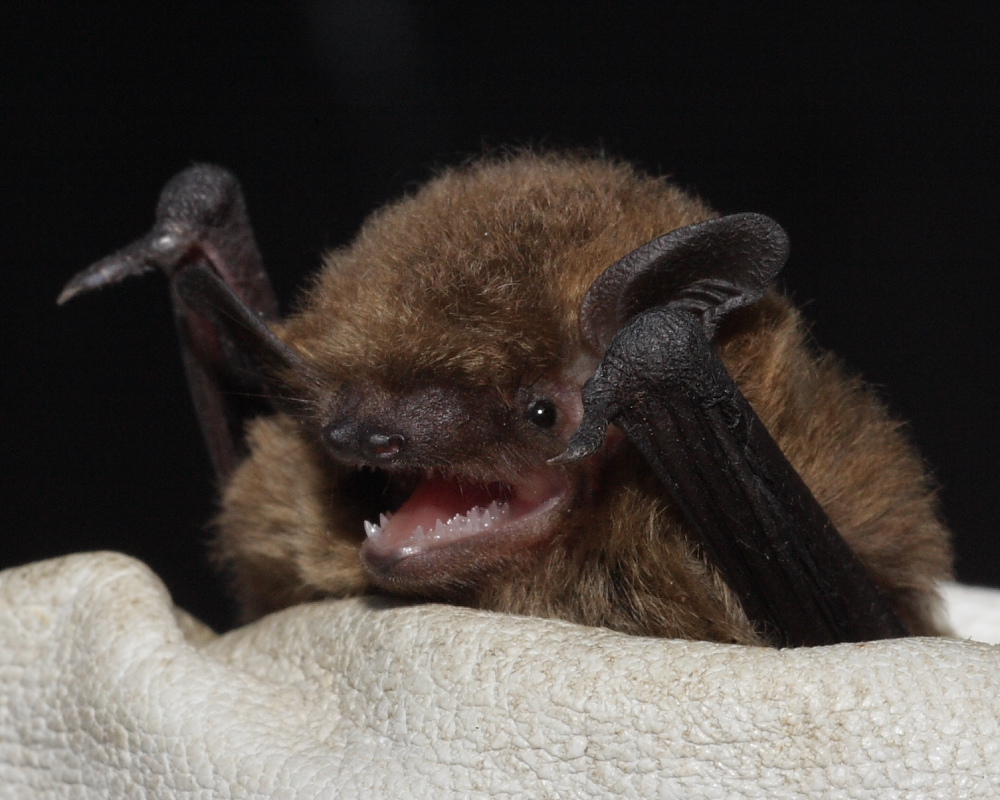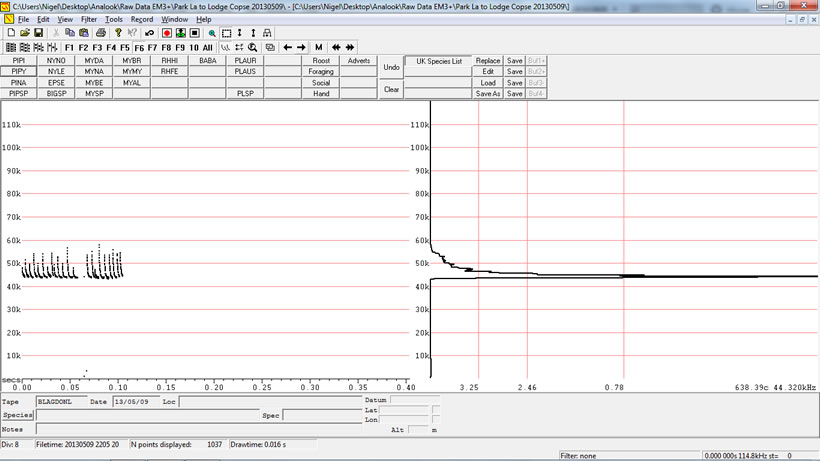Blagdon Lake Birds
Common Pipistrelle Pipistrellus pipistrellus [Schreber, 1774]
(Common, resident)

Common Pipistrelle Pipistrellus pipistrellus is one of two very similar species that were only separated in 1999 into Common and Soprano Pipistrelles Pipistrellus pygmaeus (Jones, G. & Barratt, E., 1999). They are most readily distinguished by the frequency of their echolocation calls with Common often referred to as the '45k Pip', and the Soprano known as the '55k Pip'. The suite of morphological features that separates the two species is less precise due to their variability, but includes the dark mask and more pointed face of a Common compared with the rather paler-skinned and more ' flattened' face of the Soprano. The buccal glands (cheek pouches) of a Common are creamy-white compared with the orange-yellow of a Soprano, and the same is true of the genitals of both sexes in the mating season (autumn). The wing patternation is a reasonably reliable method of separating the two species, but we do come across bats with mixed wing patternation, just to complicate the situation. Finally, the relative length of the 2nd and 3rd phalanx of the third finger is given as a feature in the Field Studies Council key and the presence of a ridge between the nostrils is mentioned in Dietz et al (although this doesn't appear to be a good feature with local bats in my, limited, experience).
The Common Pipistrelle is less dependent on riparian habitats for foraging than the Soprano, but is equally dependent on buildings and tree crevices for roost sites. Food consists of a wide range of flies, including many aquatic midge species, caught by aerial hawking from 2 to 10 metres above the ground in a fast and jerky flight. They are widely distributed around the lake and surrounding farmland, occasionally using lakeside bat boxes, where we find them when carrying out checks.
Common Pipistrelle echolocation frequency of maximum energy (FM/qCF & qCF calls) peaks at 46.6 kHz (range 43.3-49.9) with an inter-pulse interval of 102.5 ms (range 59.9-211.0) and call duration of 5.9 ms (range 3.2-8.6).
 Common Pipistrelle echolocation calls, Pipe Bay.
Common Pipistrelle echolocation calls, Pipe Bay.
Bibliography (sources of information):
- Bat Conservation Trust website
- Fisher, J., Francis, J. & Jones, Prof G. The Bats of Britain (an online guide). University of Bristol, School of Biological Sciences website
- Russ, J. 2012. British Bat Calls A Guide to Species Identification. Pelagic Publishing, Exeter.